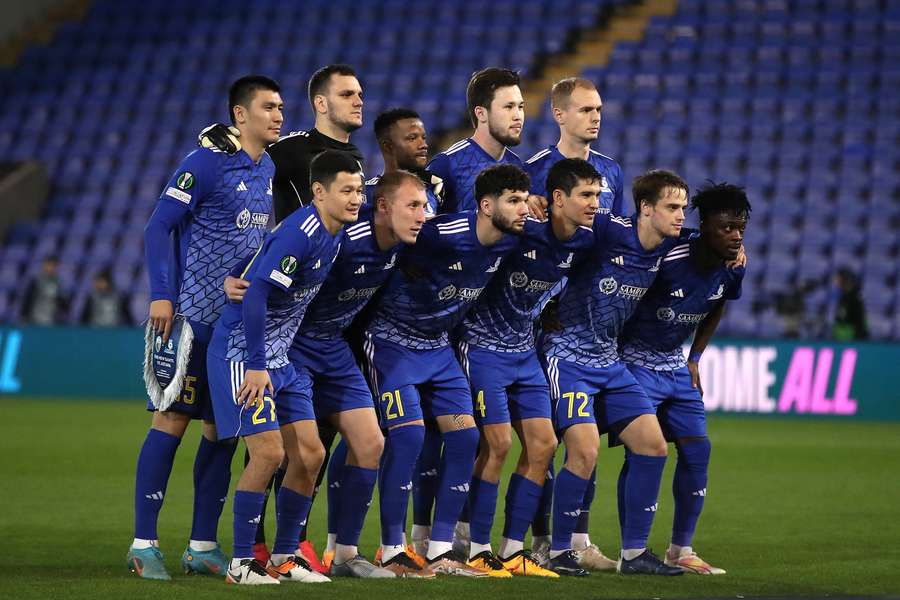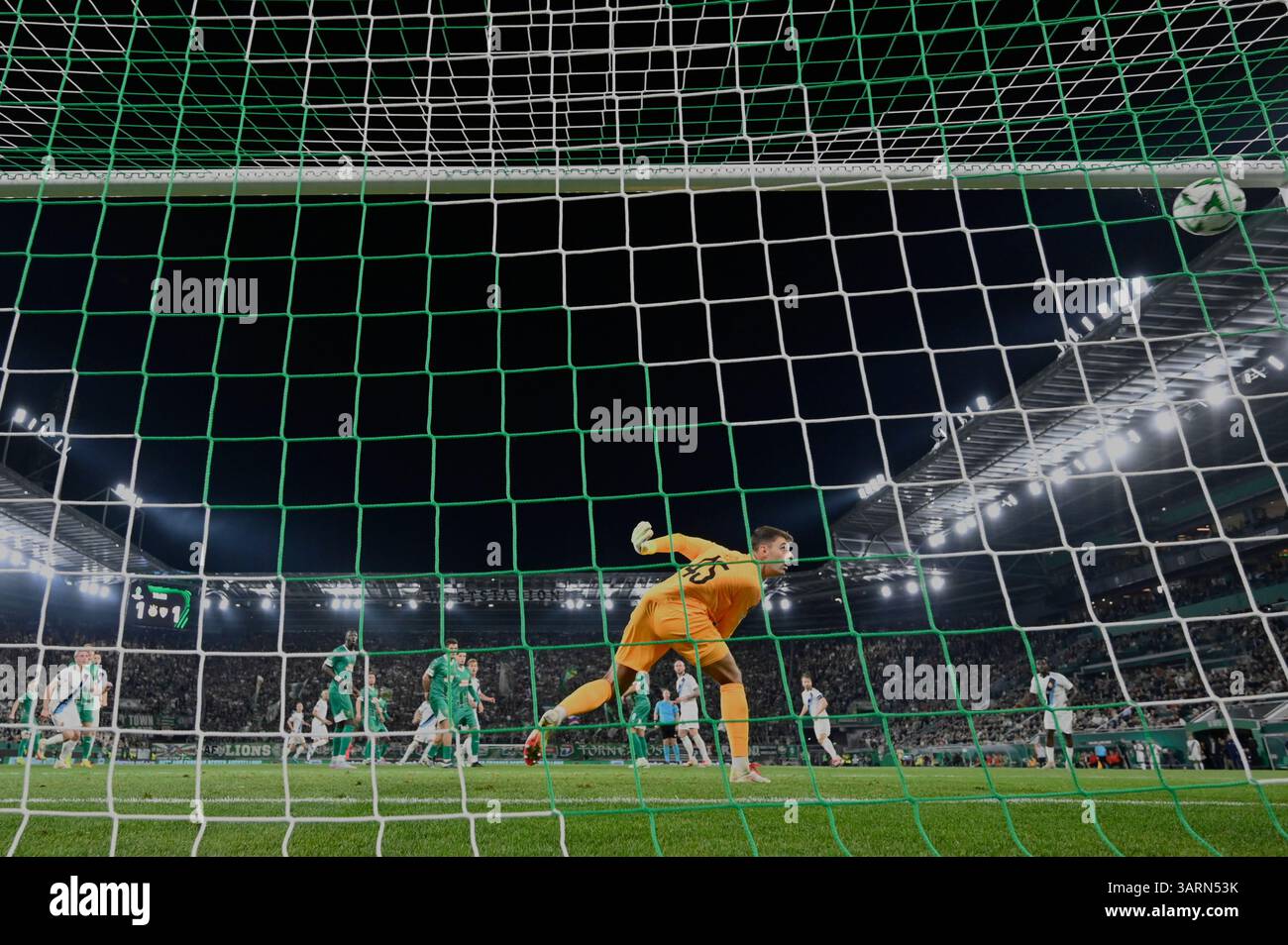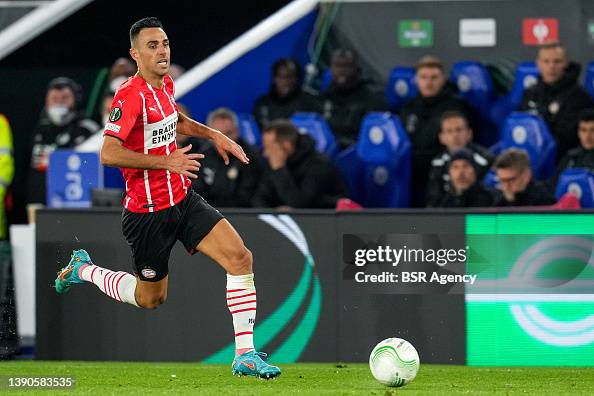Listen up, football fans! The Europa Conference League is here, and it's shaking up the world of European club football. Imagine a competition that bridges the gap between the giants of the Champions League and the underdogs of European football. That's exactly what the Europa Conference League brings to the table. It's not just another tournament; it's a game-changer for smaller clubs and emerging talents. So, if you're into football, you definitely don’t wanna miss this one.
This league is more than just a name. It’s about giving opportunities to teams that wouldn’t normally make it to the big stages. You know, those clubs that have the heart but not necessarily the budget of the big boys. The Europa Conference League is their chance to shine, and it’s already proving to be an exciting addition to the European football calendar.
But hey, let's not get ahead of ourselves. Before we dive into the nitty-gritty, it’s important to understand why this league matters and how it fits into the grand scheme of things. So, buckle up, because we’re about to take you on a journey through the world of the Europa Conference League.
Read also:January Jones Shines At Brunello Cucinelli Dinner And Calls Out United Airlines
Understanding the Europa Conference League
The Europa Conference League is UEFA’s third-tier club competition, sitting just below the Europa League. It was introduced in the 2021-2022 season, and its main goal is to provide more competitive opportunities for teams from smaller European leagues. Think of it as a platform where clubs can prove themselves against tougher opponents, all while gaining valuable experience and exposure.
One of the coolest things about this league is its accessibility. Smaller clubs now have a real shot at winning something big. It's like giving a voice to the underdogs who usually get overshadowed by the bigger names in football. This competition is all about balance and fairness, ensuring that every team has a chance to compete at a high level.
How Does the Europa Conference League Work?
The format of the Europa Conference League is pretty straightforward, yet intriguing. It starts with a group stage, where 32 teams are divided into eight groups of four. Each team plays six matches, and the top two teams from each group advance to the knockout rounds. It's a mix of familiar faces and new contenders, making every game a potential upset.
- Group Stage: 32 teams, 8 groups, 4 teams per group.
- Knockout Rounds: Top two teams from each group advance.
- Final: Single-match showdown to crown the champion.
And let’s not forget, the winner of this league gets a sweet bonus – a spot in the Europa League the following season. That’s a huge incentive for any club looking to take the next step in their journey.
Why Was the Europa Conference League Created?
Back in the day, the Europa League was the only real option for clubs that didn’t qualify for the Champions League. But over time, it became clear that even the Europa League was dominated by the bigger clubs with deeper pockets. UEFA saw this imbalance and decided to do something about it. Enter the Europa Conference League – a competition designed to level the playing field.
This league wasn’t created just for fun; it has a purpose. It’s about giving smaller clubs a fair shot at European glory. It’s about nurturing young talents and providing them with a platform to showcase their skills. And most importantly, it’s about keeping the spirit of competition alive in European football.
Read also:Powerball Winning Lottery Numbers Your Ultimate Guide To Hitting The Jackpot
The Impact on Smaller Clubs
For smaller clubs, the Europa Conference League is a godsend. It’s not just about the money – although the financial rewards are significant. It’s about the exposure, the experience, and the chance to compete against higher-level opponents. This exposure can lead to better player development, increased fan engagement, and even higher ticket sales. It’s a win-win situation for everyone involved.
Take, for example, teams like Feyenoord and Marseille. These clubs have a rich history but have struggled to compete with the likes of Bayern Munich or Manchester City. The Europa Conference League gives them a stage where they can be the stars, where they can prove that size doesn’t always matter in football.
Key Players and Teams to Watch
Now, let’s talk about the players and teams you should keep an eye on. The Europa Conference League might not have the same star power as the Champions League, but it’s packed with talent just waiting to burst onto the scene. Teams like Roma, led by the legendary Jose Mourinho, have already made a name for themselves in this competition.
Roma’s victory in the inaugural season was a testament to the quality of football in this league. Mourinho, with his tactical genius, managed to guide his team to glory, proving that the Europa Conference League is no joke. Other teams like Basel, Braga, and Lazio are also making waves, showcasing their skills and determination on the international stage.
Emerging Talents in the Europa Conference League
One of the most exciting aspects of the Europa Conference League is the emergence of young talents. Players who might not get a chance in the bigger leagues are shining here. Think of it as a breeding ground for future stars. Managers and scouts from top clubs are always on the lookout for the next big thing, and this league is the perfect place to find it.
- Tammy Abraham – Roma’s star striker who found his form in this competition.
- Moussa Diabaté – The young sensation from Marseille who dazzled with his skills.
- Haris Seferović – The Swiss striker who proved his worth with some crucial goals.
These players are just the tip of the iceberg. There are countless others who are making a name for themselves in this league, and it’s only a matter of time before they make the leap to the bigger stages.
Competition Structure and Format
Let’s break down the structure of the Europa Conference League a bit more. The competition is divided into three main phases: the qualifying rounds, the group stage, and the knockout rounds. Each phase has its own set of rules and challenges, making the journey to the final a thrilling experience for both teams and fans.
The qualifying rounds are where it all starts. Teams from smaller leagues have to battle it out to secure their spot in the group stage. It’s a tough process, but it’s also where the magic happens. You never know which team might pull off an upset and make it to the big leagues.
Group Stage: The Heart of the Competition
The group stage is where the real competition begins. With 32 teams divided into eight groups, every match matters. Teams have to fight for every point, knowing that only the top two from each group will advance. It’s a pressure cooker situation, but that’s what makes it so exciting.
Once the group stage is over, the knockout rounds kick in. This is where the drama really unfolds. Single-elimination matches mean that one mistake can cost you dearly. It’s all about staying focused and delivering when it matters most.
Financial Implications for Participating Clubs
Money talks in football, and the Europa Conference League is no exception. Participating clubs receive significant financial rewards, which can be a lifeline for smaller teams. The prize money is distributed based on performance, with the winner taking home the biggest share.
But it’s not just about the prize money. Teams also benefit from increased television revenue, higher ticket sales, and improved sponsorship deals. All of these factors contribute to the financial health of the clubs, allowing them to invest in better facilities, coaching staff, and players.
Impact on Club Finances
For clubs like Feyenoord and Marseille, the financial implications of participating in the Europa Conference League are enormous. These clubs can use the extra revenue to strengthen their squads and compete at a higher level. It’s a cycle that benefits everyone involved – the clubs, the players, and the fans.
And let’s not forget the exposure. Being part of a UEFA competition means more media coverage, more fans, and more opportunities for growth. It’s a chance for clubs to expand their brand and reach a wider audience.
Challenges and Criticisms
Of course, no competition is without its challenges and criticisms. Some people argue that the Europa Conference League dilutes the quality of European football. Others believe that it adds unnecessary matches to an already crowded calendar. These are valid concerns, but they don’t overshadow the positive aspects of this league.
One of the biggest challenges is balancing the number of matches with player welfare. With so many competitions vying for attention, it’s important to ensure that players aren’t overburdened. UEFA is aware of this issue and is working to find a solution that benefits everyone.
Addressing the Criticisms
Despite the criticisms, the Europa Conference League has proven to be a success. The inaugural season was a hit, with millions of fans tuning in to watch the matches. The quality of football was high, and the competition was intense. It’s clear that this league has found its place in the European football landscape.
As for the concerns about match congestion, UEFA is exploring ways to streamline the calendar. This might involve reducing the number of qualifying rounds or adjusting the timing of certain fixtures. The goal is to create a competition that is both exciting and sustainable.
Future Prospects and Expansion
Looking ahead, the future of the Europa Conference League is bright. UEFA has already hinted at possible expansions and improvements to the competition. This could include increasing the number of participating teams, introducing new formats, or even creating a women’s version of the league.
Expansion would mean more opportunities for clubs and players, as well as increased exposure for the competition. It’s a win-win situation for everyone involved. The Europa Conference League is still in its infancy, but it’s already making waves in the world of football.
Potential Changes and Innovations
As the league grows, we can expect to see some exciting changes and innovations. Technology could play a bigger role, with VAR and other advancements enhancing the viewing experience. There might also be new rules and formats designed to make the competition even more thrilling.
And let’s not forget the fans. UEFA is always looking for ways to engage with supporters and create a more interactive experience. This could involve digital platforms, social media campaigns, or even fan events. The future of the Europa Conference League is full of possibilities, and we can’t wait to see what’s next.
Conclusion: Why You Should Care About the Europa Conference League
So, there you have it – the Europa Conference League in a nutshell. It’s not just another football competition; it’s a game-changer for European football. From giving smaller clubs a chance to shine to nurturing young talents, this league has something for everyone.
As we’ve seen, the Europa Conference League is here to stay, and it’s only going to get better. So, if you’re a football fan who loves drama, excitement, and underdog stories, this is the competition for you. Keep an eye on it, because you never know – the next big star might just come from here.
Before you go, don’t forget to share this article with your fellow football fans. Let’s spread the word about the Europa Conference League and all the amazing things it has to offer. And hey, if you have any thoughts or opinions, drop them in the comments below. We’d love to hear what you think!
Table of Contents
- Introduction
- Understanding the Europa Conference League
- Why Was the Europa Conference League Created?
- Key Players and Teams to Watch
- Competition Structure and Format
- Financial Implications for Participating Clubs
- Challenges and Criticisms
- Future Prospects and Expansion
- Conclusion


